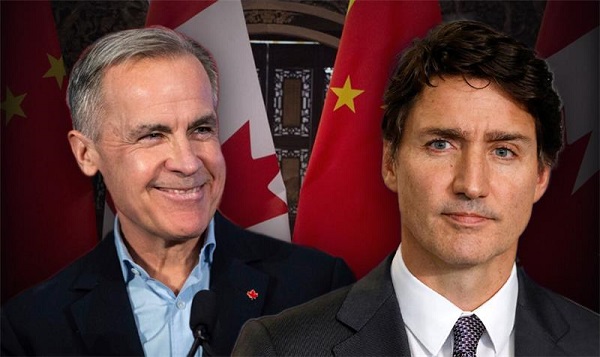Sports
The 2022 Olympics Are Over – Here’s What You Need to Know
The 2022 Winter Olympics have now drawn to a close. Sunday night’s closing ceremony dazzled the small crowds of in-person attendees. It was a fitting close to a memorable event, with music, theater, fireworks, and more. The games saw over 300 medals awarded across 109 events in the 15 sports of the Winter Olympics. The International Olympic Committee is already moving forward with plans for future Olympics, but now is a good time to reflect on what just happened.
Norway Makes Winter Olympics History
One of the biggest stories of the Olympics this year was the record-breaking performance of Team Norway. The Norway Team beat the record for most gold medals won at a single Winter Olympics with 16. This marks the second time in a row that Norway took the top spot in the medal table. Their staggering 39 medals won at Pyeongchang’s 2018 Winter Olympics was equally impressive as this year’s haul of 37 medals in total.
Russian Controversy Continues
Norway beat out the Russian Olympic Committee (ROC), which took second place in the medal count with 32. Russian athletes have been required to compete under the name ROC since a 2019 state-sponsored doping scandal banned the nation from formally competing under their flag. The ban is expected to expire in time for the 2024 Olympics in Paris.
However, certain events of the 2022 Olympics are renewing accusations regarding Russia’s doping practices. The most recent scandal centers on Kamila Valieva, a Russian figure skater who placed fourth in women’s singles. She also took first place in the short program and fifth place in free skating. Her performances helped lead the ROC team to a gold medal.
These achievements have been marred by scandal after the 15-year old skater tested positive for banned medication. A test revealed that she had taken Trimetazidine, a banned heart medication. Additionally, her tests were positive for hypoxen and L-carnitine, two other heart medications that are not banned. The United States Anti-Doping Agency commented that this combination would be intended to increase endurance and oxygen efficiency, providing a competitive edge.
The response from Valieva herself was that she had accidentally taken some of her grandfather’s heart medication, an excuse that many of her competitors aren’t buying. The US team, in particular, is upset that medals haven’t been awarded for the women’s team, even where they placed second. The International Olympic Committee has decided to postpone awarding medals in any event where Valieva was in the top 3 to await the results of an ongoing investigation.
More Major Upsets of the 2022 Olympic Games
Kamila Valieva falling to fourth place in the women’s singles was likely the most significant upset of the games. She had been considered, by most, to have been the frontrunner going in. There were plenty of other unexpected outcomes in other events as well..
The USA’s Mikaela Shiffrin skied out of three races despite her reputation as one of the best skiers of all time. This comes after having skied out just two races in the last four years of international competition. Shiffrin also competed in the mixed team parallel event where the US took fourth place.
The men’s hockey quarter-finals saw the US take on Slovakia, where the US carried a 2-1 lead into the final minute of play. Slovakia then tied the game with a last-minute goal and went on to win the tie-breaking shootout, advancing to the semi-finals. There, they lost to Finland, who then beat out the ROC to take the gold. Finland’s first Olympic Hockey gold in history.
China was heavily favored to take the skiing mixed aerials event, performing admirably, but ultimately star skier Jia Zongyang fumbled a landing. This allowed for Chris Lillis to lead Team USA to the gold in the event’s debut Olympic Games.
The US men’s speed skating team went into the event a strong favorite, having recently set a world record in December. However, the team only took bronze following an unexpected defeat in the semi-finals by the ROC, who was then beaten by Norway in the finals.
Samuel Ikpefan Bears Nigerian Flag at Closing Ceremony
The sole competitor representing Nigeria at the 2022 Olympic Games, Samuel Ikpefan, has been the focus of much Nigerian state news. He carried the Nigerian flag during the closing ceremonies, with 2018 bobsleigh competitor Seun Adigun carrying the flag during the opening ceremonies.
Ikpefan is the first Nigerian skier to compete at the Winter Olympics, finishing 73rd out of 88 in the qualifiers and not advancing to the next round. Nigeria news has been celebrating the fact that the nation has been represented in two winter Olympics in a row.
Bruce Dowbiggin
Is HNIC Ready For The Winnipeg Jets To Be Canada’s Heroes?

It’s fair to say everyone in hockey wanted the Winnipeg Jets back in the NHL. They became everyone’s darlings in 2011 when the Atlanta Thrashers, the league’s second stab at a franchise in Georgia, were sold to Canadian interests including businessman David Thomson. (Ed.: Gary Bettman’s try number three in Atlanta is upcoming.).
Yes, the market is tiny. Yes, the arena is too small. Yes, Thomson’s wealth is holding back a sea of inevitability. But sentimentalists remembering the Bobby Hull WHA Jets and the Dale Hawerchuk NHL Jets threw aside their skepticism to welcome back the Jets. The throwback uniforms with their hints at Canada’s air force past were an understated nod to their modest pretensions. It was a perfect story.

The question now, however, is will the same folks get dewey-eyed about the Jets if they become the first Canadian team to win the Stanley Cup since (checks his cards) Montreal and Patrick Roy did it in 1993. It would be helpful in this election year if something were to bind a nation torn apart by politics. The Gordie Howe Elbows Up analogy is more than shopworn, and Terry Fox can only be resurrected so often. So a Cup win might be a welcome salve.
But the approved script has long dictated that the Canadian team to break the schneid should be one of the glamour twins of the NHL’s Canadian content, the Edmonton Oilers or the (gulp) Toronto Maple Leafs. The Oilers and their superstar Connor McDavid barely lost out last spring to Florida while the Leafs, laden with superstars like Auston Matthews and William Nylander, are overdue for a long playoff run.
Hockey Night In Canada positively pants for the chance to gush over these two squads each week. When was the last time Toronto played an afternoon game so HNIC could showcase the Jets? Like, never. Same for the Oilers, who with their glittering stars like McDavid Leon Draisaitl and Ryan Nugent Hopkins are the primary tenants of the doubleheader slot, followed by Calgary. Winnipeg? We’ll get to them.

But there’s going to be no ignoring them in the spring of 2025. The Jets in the northern outpost in Manitoba were the top team in the entire league in 2024-25. They’ll comfortably win the Presidents Cup as the No. 1 squad and have home-ice advantage throughout the playoffs. They have the league’s best goalie in Connor Hellebuyck (an American) and a stable of top scorers led by Kyle Connor and Mark Schiefele. Because Winnipeg is on a lot of No Trade lists, they have built themselves through the draft and thrifty budgeting.
But will the same people who swooned over the Jets in 2011 now find them as adorable if they ruin the Stanley Cup plot lines of the Oilers, Leafs and Ottawa Senators? Will the fans of Canadian teams in Vancouver, Calgary and Montreal not making the postseason take the Jets to their hearts or will they be as phoney as the Mike Myers commercials for the Liberals?
In addition, the Jets will be swamped by national media should they proceed through the playoffs. It’s one thing to carry the expectations of Winnipeg and Manitoba. It’s another to foot the bill for a hockey crazy county. We remember Vancouver’s GM Mike Gillis during the Canucks 2011 Cup run bemoaning the late arrivers of the press trying to critique his team as they made their way through the playoffs.
It will be no picnic for the Jets, however strong they’ve been in the regular season. No one was gunning for them as they might for the Oilers or Leafs. They will now get their opponents’ best game night after night. Hellebuyck has been a top three goalie in the NHL for a while, winning the Vezina Trophy, but his playoff performance hasn’t matched that of his regular-season version.
Already the injury bug that sidelines so many Cup dreams is biting at the Jets. Nikolaj Ehlers collided with a linesman in Saturday’s OT win in Chicago. Defenceman Dylan Samberg is also questionable after stopping a McDavid slap shot with his leg. A rash of injuries has ended the run of many a worthy Cup aspirant in the past. Can Winnipeg’s depth sustain the churn of seven weeks of all-out hockey?
As always for the small-market Jets time is of the essence. Keeping this core together is difficult with large markets lusting after your players. With the NHL salary cap going up it remains a chore to keep their top players. Schiefele and Hellebuyck are tied up longterm, but 40-goal man Connor is a UFA after next season while Ehlers is not signed after this season. Young Cole Perfetti will be an RFA in 2026. Etc.
So how much do Canadians love the Jets if they sneak in and steal the hero role by winning a Canadian Cup? Lets see Ron MacLean pun his way through that one.
Bruce Dowbiggin @dowbboy is the editor of Not The Public Broadcaster A two-time winner of the Gemini Award as Canada’s top television sports broadcaster. His new book Deal With It: The Trades That Stunned The NHL And Changed Hockey is now available on Amazon. Inexact Science: The Six Most Compelling Draft Years In NHL History, his previous book with his son Evan, was voted the seventh-best professional hockey book of all time by bookauthority.org. You can see all his books at brucedowbigginbooks.ca.
Bruce Dowbiggin
Bettman Gives Rogers Keys To The Empire. Nothing Will Change
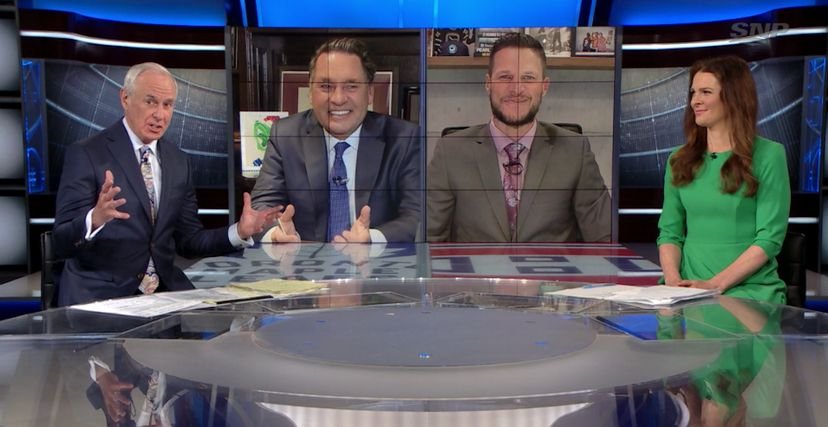
Good news if you like the way Rogers Sportsnet covers hockey in Canada. You’re about to get a whole lot more of it. In a move that sums up Gary Bettman’s unique broadcast philosophy the NHL has awarded the Canadian TV/ digital/ streaming rights to Rogers for the next 12 years. The price tag? 12 billion U.S. dollars (about $16.B CDN dollars).
While the pattern in modern sports broadcasting rights has been toward sharing the wealth among competing bidders— the NFL has six distinct partners— Bettman the contrarian has opted for a different notion. He’s all in with one Canadian partner, and let his critics STFU.
As opposed to the previous CDN national monopoly awarded to Rogers in 2013 this one bestows national rights in all languages across TV, streaming and digital for all regular-season and playoff games, plus the Stanley Cup Final and all special events. This extends to coverage in all regions. There are some concessions for Rogers to sell limited cutout packages, such as the Monday Night Amazon package they’ve created.
Presuming Pierre Poliievre doesn’t get his way with CBC, Rogers will likely piggyback on their time-sharing agreement for Saturday Hockey Night In Canada to get CBC’s network reach. (There remain many hockey fans who still think CBC has the NHL contract. Go figure.)
Translation: there will be no regional packages for TSN to produce Montreal Canadiens, Ottawa Senators or Toronto Maple Leafs games, for instance. But there will be regional blackouts, because nothing says we are proud of our product like denying it to a larger audience. Conn Smythe would be proud.
At the presser to announce the deal Rogers and Bettman were coy about how much they will charge consumers for the honour of being inundated by content in what now seems likely to be a 36-team league by the time the deal expires. Will costs be added to cable/ satellite packages? How much for streaming? With stories circulating that Rogers massively overbid for the package to get the monopoly it’s apparent that the phone company will be turning over every nickel to make it worthwhile.
Fans are apprehensive and over-saturated with hockey content already. For that reason, the NHL is now desperately looking for ways to lessen the tedium of the 82-game regular schedule with midseason content like the 4 Nations Cup or a World Cup format. In Canada’s hockey-mad environment Rogers will have a passionate market, but even the most fervent fans will only spend so much for their fix.
Already, Rogers is trumpeting its re-acquisition with commercials featuring Ron Maclean doing his breathy feels-like-home voice about how Sportsnet is the natural landing spot for hockey until many of us are dead. Bettman made cooing noises about Rogers’ commitment at the announcement.
But let us cast our minds back to 2013 when the last Rogers/ NHL deal was concocted. We were the sports media columnist at the Mop & Pail at the time and much was made that Rogers would be a technological marvel, re-inventing the way we watched hockey. There would be new camera angles, referee cams, heightened audio, refreshed editorial content etc.

As hockey fans now know Rogers dabbled in the brave new world briefly, blanched at the cost of being creative and largely went back to doing hockey the way it had always been done. Taking no risks. On some regional casts that meant as few as three or four cameras for the action.
But if you were expecting dashboard cameras and drone shots you were sadly disappointed. Similarly there was a brief stab at refreshing the pre-, mid- and postgame content. Hipster George Stromboulopoulos was brought in as a host to attract a larger female audience.
But pretty soon Strombo was gonzo, replaced by the anodyne David Amber (whose dad was once the leader of the journalist union at CBC). Women like former player Jennifer Botterill were brought in to change the gender balance on panels. They then acted pretty much like guys, chalk-talking viewers into numbness. Appointment viewing has become a fallback choice.
The move away for anything controversial came in 2019 with Rogers’ axing of Don Cherry’s Coach’s Corner in a flap over the former coach’s continuing ventures into political or cultural content. Maclean slipped the knife into his meal ticket and continued on the show. After time in limbo, doing location shoots, he was returned full-time to the desk.

As we wrote in June of 2022, the one exception to the standard “serious, sombre, even a touch grim” tone is former defenceman Kevin Bieksa. “Bieksa has been a moveable feast. His insouciance with media has become his ragging on the fellow panelists during intermissions that used to be as much fun as skating in July.” His banter with “insider” Elliotte Friedman is now a lone concession to wit on the show.
Intermissions are numbingly predictable, and Rogers’ stable of analysts and play-by-play announcers outside of HNIC is unchallenging to the orthodoxy of PxP being a radio call over TV pictures. Name one star beside Bieksa that has been produced by Rogers’ “safe” broadcast style since 2013. They’d fit in perfectly in a 1980s hockey broadcast. Now compare it with the lively Amazon broadcasts hosted by Adnan Virk and Andi Petrillo.
This leaves a lingering question. What happens to TSN? Many prefer the editorial and studio profile of TSN on Trade Deadline Day or Free Agent frenzy. TSN locked up its stars such as James Duthie and Bob McKenzie when the last deal was signed. But there isn’t enough live content this time to support keeping a full roster anymore. Who will stay and who will go? (TSN’s president Stewart Johnson is the new commissioner of the CFL).
And with Rogers taking full control of MLSE (Maple Leafs, Raptors, Argos, Toronto FC) TSN is left with the CFL and packages of NFL, golf, tennis, some auto racing and international soccer. Is that enough on which to float a network? There have been rumours that Bell, owner of TSN, is interested in divesting itself of the high cost of sports broadcasting. Should that happen— who has the money to replace them?— the effect will be seismic in Canadian broadcasting.
For now, watch how much pressure the NHL puts on Rogers to up its game. More importantly what will happen when Bettman finally retires and the league has a new vision since 1992? Rogers has sewn up its end. Will the audience go with them?
Bruce Dowbiggin @dowbboy is the editor of Not The Public Broadcaster A two-time winner of the Gemini Award as Canada’s top television sports broadcaster, his new book Deal With It: The Trades That Stunned The NHL And Changed hockey is now available on Amazon. Inexact Science: The Six Most Compelling Draft Years In NHL History, his previous book with his son Evan, was voted the seventh-best professional hockey book of all time by bookauthority.org . His 2004 book Money Players was voted sixth best on the same list, and is available via brucedowbigginbooks.ca.
-

 2025 Federal Election2 days ago
2025 Federal Election2 days agoOttawa Confirms China interfering with 2025 federal election: Beijing Seeks to Block Joe Tay’s Election
-

 2025 Federal Election1 day ago
2025 Federal Election1 day agoBREAKING: THE FEDERAL BRIEF THAT SHOULD SINK CARNEY
-
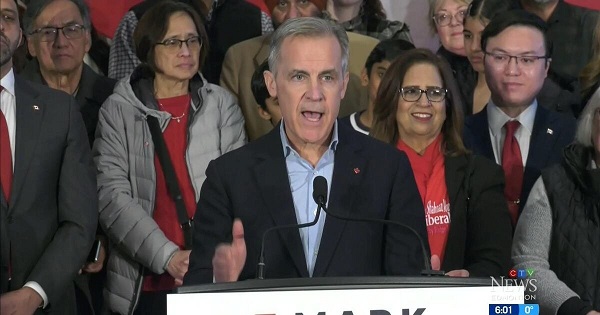
 2025 Federal Election2 days ago
2025 Federal Election2 days agoHow Canada’s Mainstream Media Lost the Public Trust
-
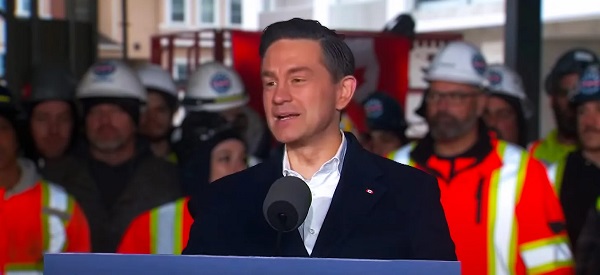
 2025 Federal Election2 days ago
2025 Federal Election2 days agoReal Homes vs. Modular Shoeboxes: The Housing Battle Between Poilievre and Carney
-

 2025 Federal Election1 day ago
2025 Federal Election1 day agoCHINESE ELECTION THREAT WARNING: Conservative Candidate Joe Tay Paused Public Campaign
-
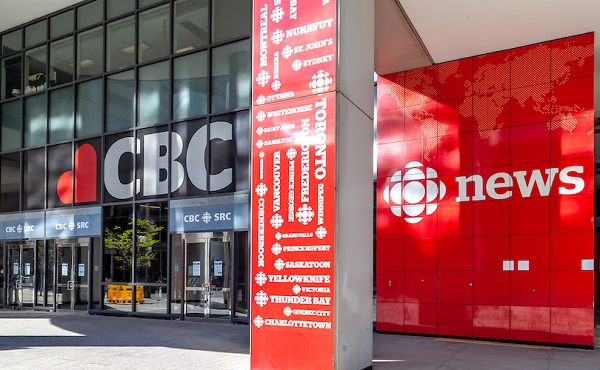
 Media1 day ago
Media1 day agoCBC retracts false claims about residential schools after accusing Rebel News of ‘misinformation’
-
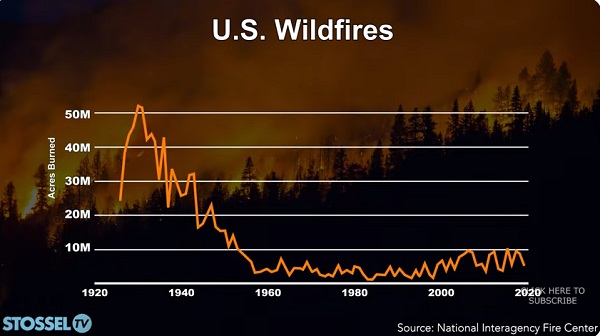
 John Stossel1 day ago
John Stossel1 day agoClimate Change Myths Part 2: Wildfires, Drought, Rising Sea Level, and Coral Reefs
-

 COVID-192 days ago
COVID-192 days agoNearly Half of “COVID-19 Deaths” Were Not Due to COVID-19 – Scientific Reports Journal



